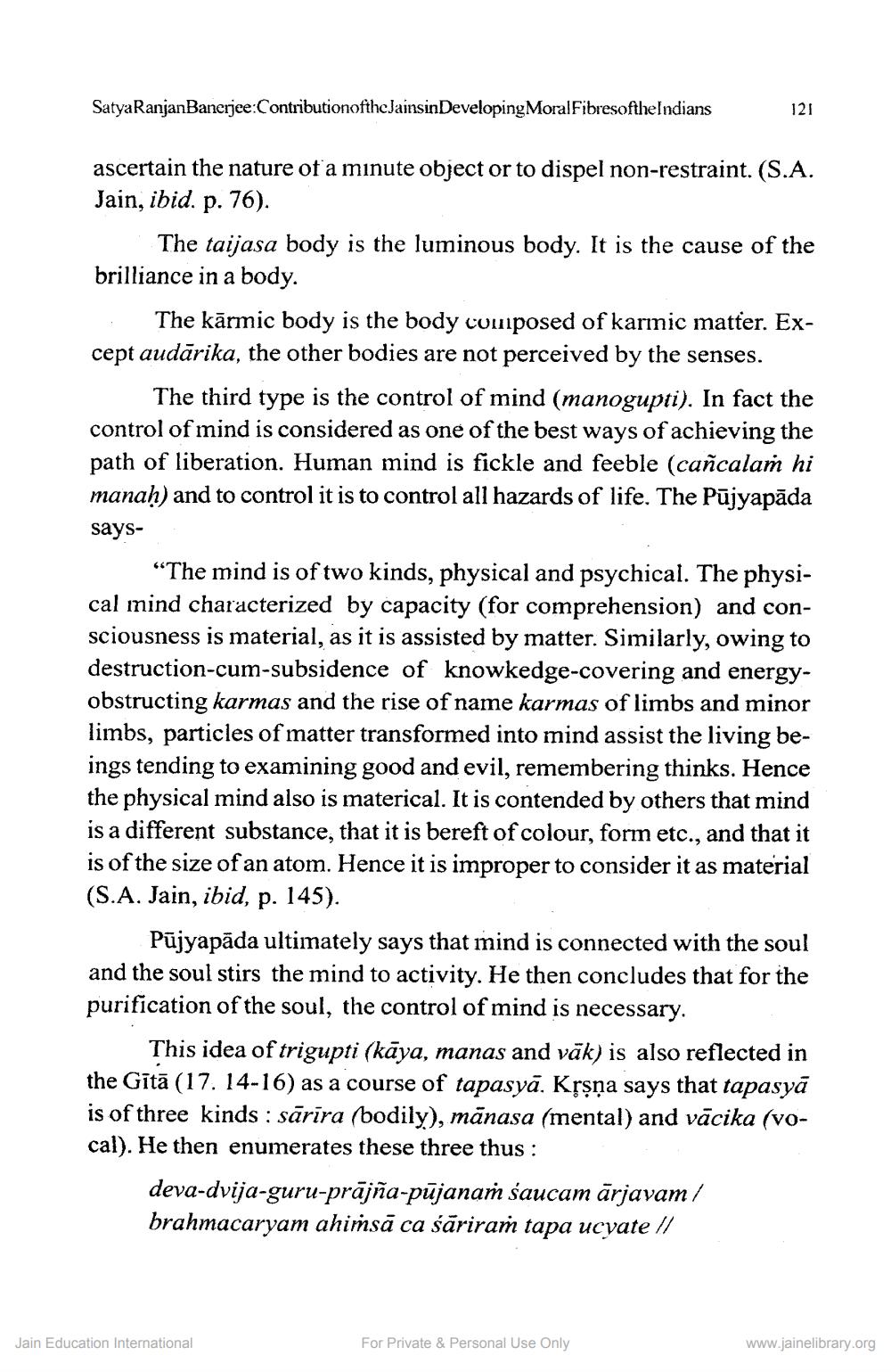________________
Satya RanjanBanerjee:Contributionofthe JainsinDeveloping Moral FibresoftheIndians
ascertain the nature of a minute object or to dispel non-restraint. (S.A. Jain, ibid. 76).
p.
The taijasa body is the luminous body. It is the cause of the brilliance in a body.
121
The karmic body is the body composed of karmic matter. Except audărika, the other bodies are not perceived by the senses.
The third type is the control of mind (manogupti). In fact the control of mind is considered as one of the best ways of achieving the path of liberation. Human mind is fickle and feeble (cañcalam hi manah) and to control it is to control all hazards of life. The Pujyapāda
says
"The mind is of two kinds, physical and psychical. The physical mind characterized by capacity (for comprehension) and consciousness is material, as it is assisted by matter. Similarly, owing to destruction-cum-subsidence of knowkedge-covering and energyobstructing karmas and the rise of name karmas of limbs and minor limbs, particles of matter transformed into mind assist the living beings tending to examining good and evil, remembering thinks. Hence the physical mind also is materical. It is contended by others that mind is a different substance, that it is bereft of colour, form etc., and that it is of the size of an atom. Hence it is improper to consider it as material (S.A. Jain, ibid, p. 145).
Pujyapāda ultimately says that mind is connected with the soul and the soul stirs the mind to activity. He then concludes that for the purification of the soul, the control of mind is necessary.
This idea of trigupti (kāya, manas and vāk) is also reflected in the Gītā (17. 14-16) as a course of tapasya. Kṛṣṇa says that tapasya is of three kinds : sarira (bodily), mänasa (mental) and vācika (vocal). He then enumerates these three thus:
deva-dvija-guru-prājña-pujanam saucam arjavam/ brahmacaryam ahimsă ca săriram tapa ucyate //
Jain Education International
For Private & Personal Use Only
www.jainelibrary.org




